TradeDoubler Bundle
Who Really Controls TradeDoubler?
Unraveling the TradeDoubler SWOT Analysis is just the beginning; understanding its ownership is key. Knowing who calls the shots at TradeDoubler is crucial for investors and industry watchers alike. From its inception in Sweden in 1999, TradeDoubler's journey has been shaped by pivotal ownership shifts.
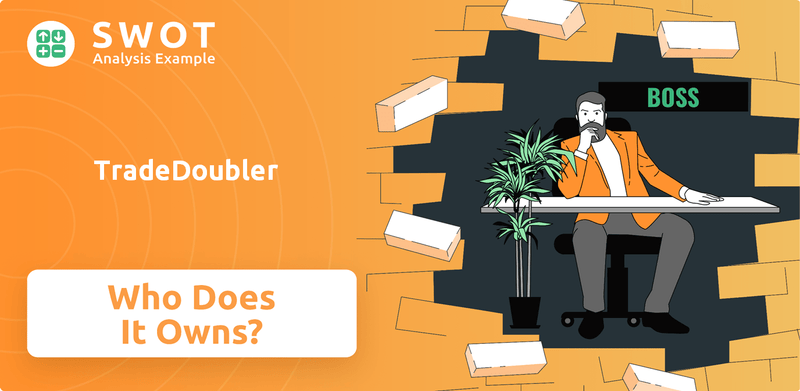
This exploration into TradeDoubler ownership will illuminate the company's
Who Founded TradeDoubler?
TradeDoubler, a prominent player in the digital marketing sphere, was established in 1999. The company's inception is credited to Martin Lorentzon and Felix Hagnö, who jointly laid the foundation for its operations. Their vision was instrumental in shaping TradeDoubler's early direction within the performance marketing sector.
While specific details regarding the initial equity distribution between the founders are not publicly available, it's evident that Lorentzon and Hagnö played crucial roles. Their combined expertise in technology and entrepreneurship was pivotal in the company's early development. This expertise helped TradeDoubler become a leading affiliate marketing platform.
Early-stage companies like TradeDoubler often have agreements, such as vesting schedules. These agreements are essential for ensuring the founders' commitment and managing potential shareholder exits. The founders' control was directly linked to their vision, which allowed them to guide the company through its formative years.
The early ownership of TradeDoubler was primarily held by its founders, Martin Lorentzon and Felix Hagnö. The exact initial shareholding percentages are not publicly documented. The company's early phase involved agreements typical of startups.
- Vesting schedules were likely implemented to ensure founder commitment.
- Potential buy-sell clauses may have been in place to manage early shareholder exits.
- The founders' vision for an affiliate marketing platform shaped the distribution of control.
- Early backers beyond the founders are not extensively documented in public records.
For more insights into the company's strategic approach, you can explore the Marketing Strategy of TradeDoubler. This will provide a deeper understanding of TradeDoubler's business model and its evolution over time.
TradeDoubler SWOT Analysis
- Complete SWOT Breakdown
- Fully Customizable
- Editable in Excel & Word
- Professional Formatting
- Investor-Ready Format
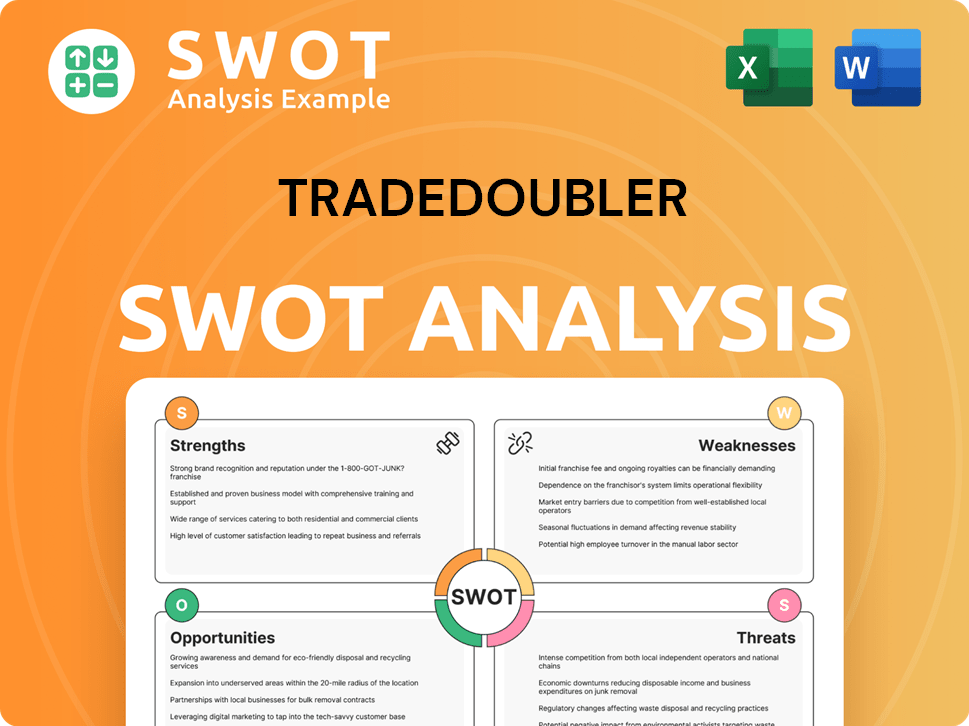
How Has TradeDoubler’s Ownership Changed Over Time?
The evolution of TradeDoubler's ownership is marked by its transition from a privately held entity to a publicly listed company. This shift occurred when TradeDoubler went public, with its shares listed on Nasdaq Stockholm. This initial public offering (IPO) was a pivotal moment, changing the company's ownership structure and broadening its shareholder base. The company's history has seen changes in ownership, influenced by market dynamics and strategic choices.
As of late 2024 and early 2025, the major stakeholders in TradeDoubler typically include a mix of institutional investors, mutual funds, and individual shareholders. While precise, real-time percentages for all major institutional holdings can fluctuate, this information is generally available through their SEC filings or annual reports. These changes in ownership can significantly affect company strategy and governance, as major shareholders often wield considerable influence through their voting power and engagement with the board of directors. The presence of various institutional investors suggests a broad market interest in TradeDoubler's performance and future prospects. Analyzing the company's SEC filings provides the most current details on major shareholders.
| Event | Impact on Ownership | Year |
|---|---|---|
| Initial Public Offering (IPO) | Transitioned from private to public ownership, diversified shareholder base. | Early 2000s |
| Strategic Acquisitions | Could lead to changes in ownership structure depending on the terms of the deals. | Ongoing |
| Market Fluctuations | Share prices and investor confidence can impact ownership through stock purchases and sales. | Ongoing |
Understanding the current ownership structure of TradeDoubler is crucial for anyone interested in the company's direction and potential future developments. The company's ownership structure has evolved significantly since its inception, reflecting its growth and strategic decisions. For more detailed insights into the current ownership, including the identity of major shareholders and their respective stakes, consulting the latest financial reports and regulatory filings is essential. This information is vital for investors and stakeholders seeking a comprehensive understanding of TradeDoubler's position in the market. For more information about TradeDoubler's history, you can read more about it.
TradeDoubler's ownership structure has evolved significantly since its IPO.
- Major shareholders include institutional investors, mutual funds, and individual shareholders.
- Ownership changes can influence company strategy.
- Consult financial reports for the latest ownership details.
- The company's structure reflects its growth and strategic decisions.
TradeDoubler PESTLE Analysis
- Covers All 6 PESTLE Categories
- No Research Needed – Save Hours of Work
- Built by Experts, Trusted by Consultants
- Instant Download, Ready to Use
- 100% Editable, Fully Customizable
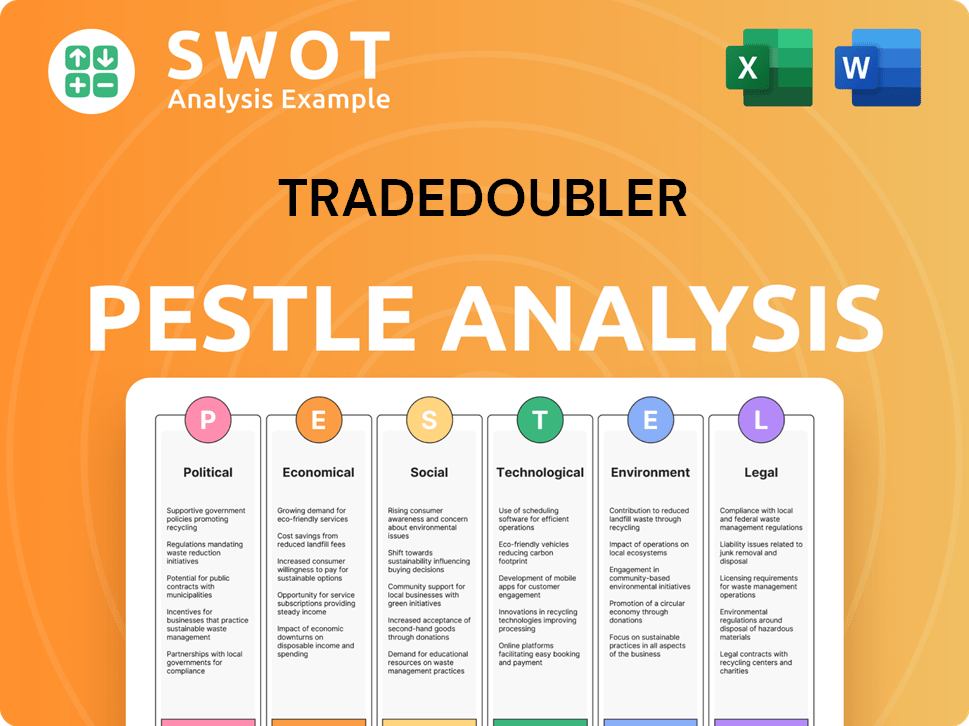
Who Sits on TradeDoubler’s Board?
The current board of directors of TradeDoubler is responsible for overseeing the company's governance and strategic direction. The board's composition typically includes a mix of independent directors and those potentially representing major shareholders. This structure ensures a balance between diverse perspectives and shareholder interests, which is crucial for effective corporate governance.
The board's role is critical in making key decisions, including financial oversight, executive appointments, and strategic planning. Their decisions directly impact the company's performance and its ability to navigate the competitive landscape. The board's composition and the expertise of its members are vital for ensuring that TradeDoubler remains competitive and adaptable to market changes. The board members' profiles and their specific roles are detailed in the company's annual reports and filings with Nasdaq Stockholm.
| Board Member | Role | Notes |
|---|---|---|
| To be updated with the latest information from the company's official filings. | To be updated with the latest information from the company's official filings. | To be updated with the latest information from the company's official filings. |
| To be updated with the latest information from the company's official filings. | To be updated with the latest information from the company's official filings. | To be updated with the latest information from the company's official filings. |
| To be updated with the latest information from the company's official filings. | To be updated with the latest information from the company's official filings. | To be updated with the latest information from the company's official filings. |
The voting structure for TradeDoubler's shares generally operates on a one-share-one-vote basis, which is standard for publicly listed companies on Nasdaq Stockholm. This structure means that voting power is directly proportional to the number of shares held. While specific individuals or entities with outsized control due to special voting rights are not prominently reported, significant shareholders can exert influence through their aggregate voting power and their ability to elect board members. For more details on the company's background, you can refer to the Brief History of TradeDoubler.
TradeDoubler's governance is shaped by its board of directors and the voting rights of its shareholders. The board oversees strategic decisions, while shareholders influence the company's direction through their voting power.
- The board includes independent directors and representatives of major shareholders.
- Voting is typically one share, one vote.
- Major shareholders can influence decisions.
- No recent proxy battles have significantly reshaped decision-making.
TradeDoubler Business Model Canvas
- Complete 9-Block Business Model Canvas
- Effortlessly Communicate Your Business Strategy
- Investor-Ready BMC Format
- 100% Editable and Customizable
- Clear and Structured Layout
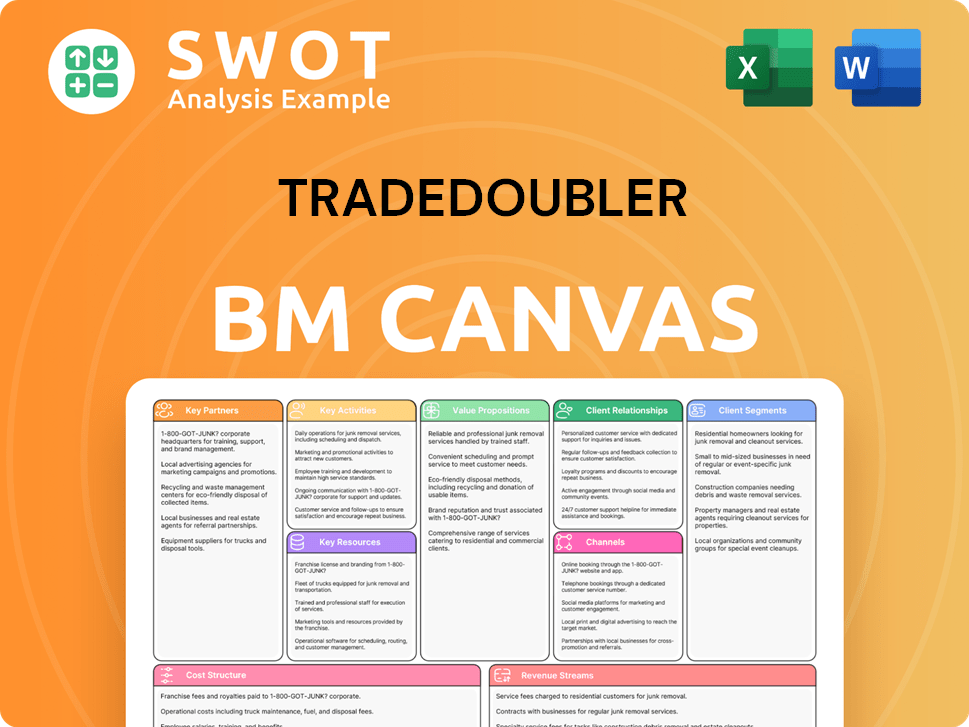
What Recent Changes Have Shaped TradeDoubler’s Ownership Landscape?
Over the past few years, the ownership structure of TradeDoubler has seen shifts, reflecting broader trends in the digital marketing sector. These trends include increased institutional investment and consolidation through mergers and acquisitions. While specific details on share buybacks or secondary offerings for 2024-2025 are not extensively available in public summaries, the company's financial reports would offer such insights. Changes in leadership or founder departures can also influence ownership dynamics, potentially leading to share redistribution.
The performance marketing industry has experienced a growing interest from institutional investors seeking stable returns and growth. As of the latest reports, TradeDoubler's strategic focus appears to remain on its current operational strategy and market position. The company has not made significant public announcements regarding succession plans or potential changes to its public or private status. For more details about the company's target audience, you can read about the Target Market of TradeDoubler.
Institutional ownership in digital marketing firms has been increasing, indicating a shift towards more stable investment profiles. Mergers and acquisitions within the performance marketing sector can lead to changes in ownership as companies consolidate or divest assets. Leadership changes can also influence ownership as shares may be redistributed.
The digital marketing landscape is seeing increased consolidation, with larger firms acquiring smaller ones to expand their market share. This has led to shifts in ownership structures across the industry. The focus remains on growth opportunities within the affiliate marketing and advertising platform sectors.
TradeDoubler Porter's Five Forces Analysis
- Covers All 5 Competitive Forces in Detail
- Structured for Consultants, Students, and Founders
- 100% Editable in Microsoft Word & Excel
- Instant Digital Download – Use Immediately
- Compatible with Mac & PC – Fully Unlocked
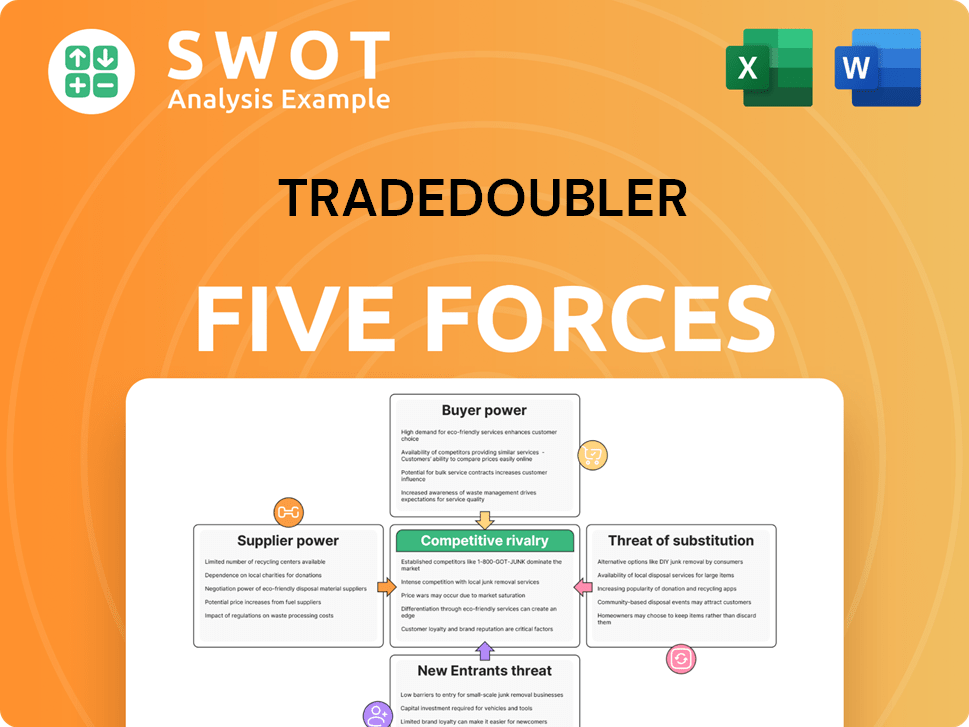
Related Blogs
- What are Mission Vision & Core Values of TradeDoubler Company?
- What is Competitive Landscape of TradeDoubler Company?
- What is Growth Strategy and Future Prospects of TradeDoubler Company?
- How Does TradeDoubler Company Work?
- What is Sales and Marketing Strategy of TradeDoubler Company?
- What is Brief History of TradeDoubler Company?
- What is Customer Demographics and Target Market of TradeDoubler Company?
Disclaimer
All information, articles, and product details provided on this website are for general informational and educational purposes only. We do not claim any ownership over, nor do we intend to infringe upon, any trademarks, copyrights, logos, brand names, or other intellectual property mentioned or depicted on this site. Such intellectual property remains the property of its respective owners, and any references here are made solely for identification or informational purposes, without implying any affiliation, endorsement, or partnership.
We make no representations or warranties, express or implied, regarding the accuracy, completeness, or suitability of any content or products presented. Nothing on this website should be construed as legal, tax, investment, financial, medical, or other professional advice. In addition, no part of this site—including articles or product references—constitutes a solicitation, recommendation, endorsement, advertisement, or offer to buy or sell any securities, franchises, or other financial instruments, particularly in jurisdictions where such activity would be unlawful.
All content is of a general nature and may not address the specific circumstances of any individual or entity. It is not a substitute for professional advice or services. Any actions you take based on the information provided here are strictly at your own risk. You accept full responsibility for any decisions or outcomes arising from your use of this website and agree to release us from any liability in connection with your use of, or reliance upon, the content or products found herein.